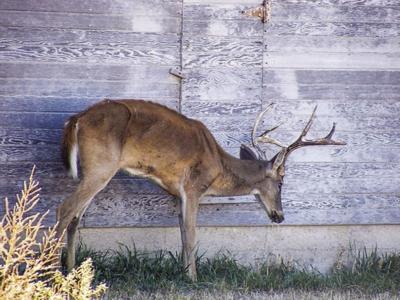Two years after it was first discovered in Louisiana, state wildlife officials have detected seven additional cases of chronic wasting disease, a fatal illness that has afflicted deer in more than 30 states.
There have now been 19 confirmed Louisiana cases of the disease, officials said Friday. CWD affects the nervous systems and brains of deer, elk moose and reindeer and can lead to erratic behavior, drooling and emaciation.
It is not believed to be a threat to humans or domesticated animals.
Biologists from Louisiana’s Department of Wildlife and Fisheries have been on alert for the disease after a case was discovered in Mississippi’s Issaquena County in 2018, just across the Mississippi River from Tensas Parish. Two years before that, the disease had been found in a deer in Arkansas.
With its first confirmed case in January 2022, Louisiana joined a growing club of more than 30 states that have detected the disease.?
Once this disease is discovered, it is extremely hard to eradicate, said Krysten Schuler, a Cornell University researcher who studies wildlife diseases.
“The best way to stop it is not to get it in the first place,” Schuler said.
The disease is easily transmitted among deer, elk and moose, but slow acting, she added.
“When a deer gets infected, it usually takes a year or two to die,” Schuler said. “It’s more likely to be killed by something else” like a predator or a car.
For a few years after the disease enters a population, the primary impact will be slowing deer population growth, Schuler said. But if the disease progresses, it can have a much greater effect on deer numbers.
After the discovery of the disease in 2022, the Louisiana Department of Wildlife and Fisheries declared an emergency and designated a CWD “control area,” which includes all of Tensas Parish and parts of Madison, Franklin and Concordia parishes.
Hunters in the control area are prohibited from hunting over bait such as grain or salt and are forbidden to take whole deer carcasses out of the area. They are free to transport deboned meat or other parts of the carcass under certain conditions.
Officials also put out coolers for hunters to drop off samples of the deer they killed for testing.
Since July 2023, state officials have collected approximately 2,300 samples, the majority of those from deer killed by hunters. Five samples had been confirmed positive as of Jan. 23, with more expected from samples collected before Jan. 31, which was the end of deer season in the northeast part of the state.
All of the positive cases have been in Tensas Parish.
Despite its prevalence, chronic wasting disease is largely mysterious to researchers, Schuler said.
“It’s hard,” she said. “We don’t have a lot of tools.”
Chronic wasting disease is caused by a mutated protein known as a prion, she said, and is the first known prion-caused disease in free-ranging wildlife. Other prion diseases include scrapie, which infects sheep, and mad cow disease.
The prion can be shed in saliva, urine or feces, Schuler said. Using grain or salt to lure deer can help the disease spread, she said, likening it to a salad bar where diners just lowered their faces into the serving bowls and ate.
“The pile of bait is problematic,” she said.

